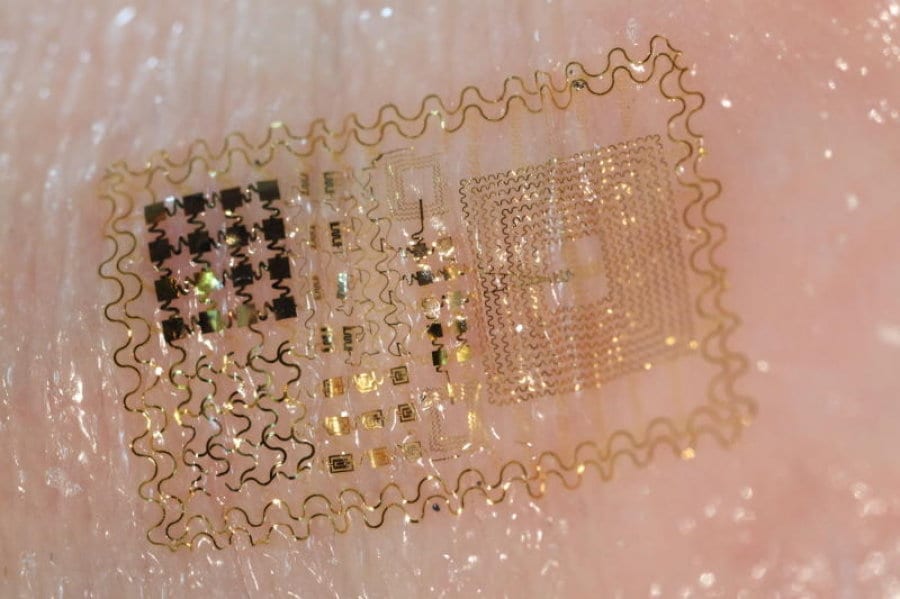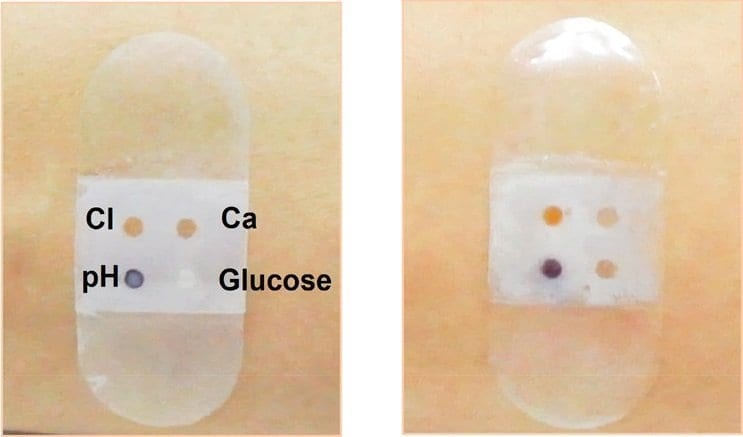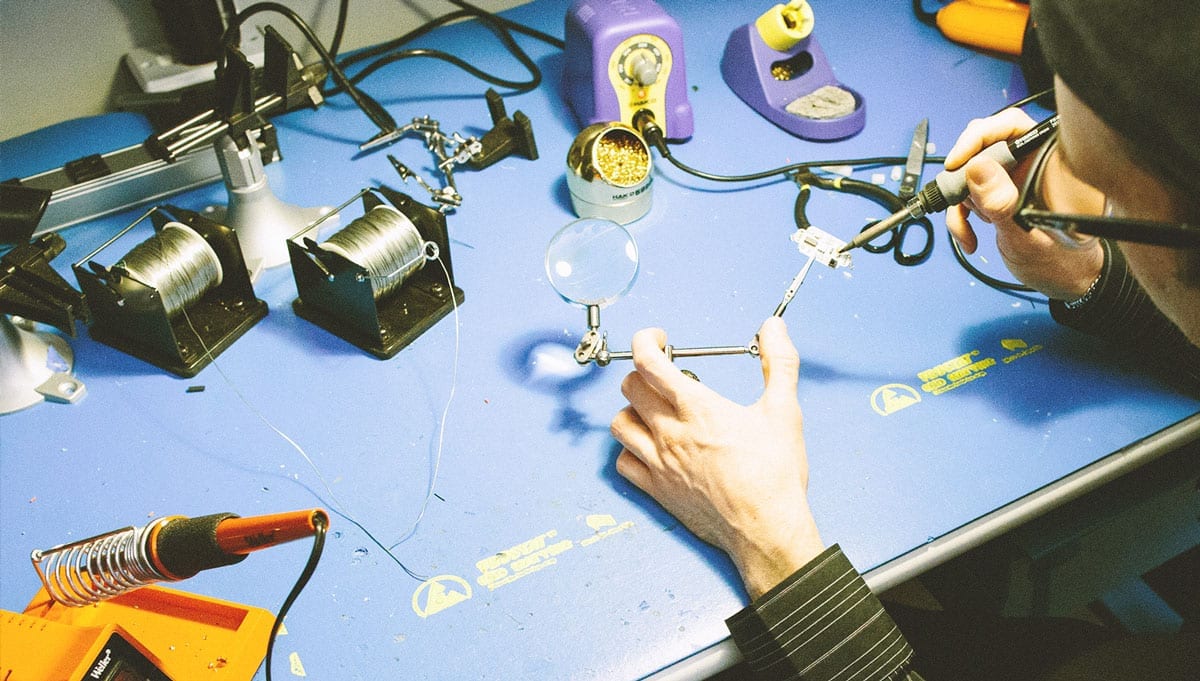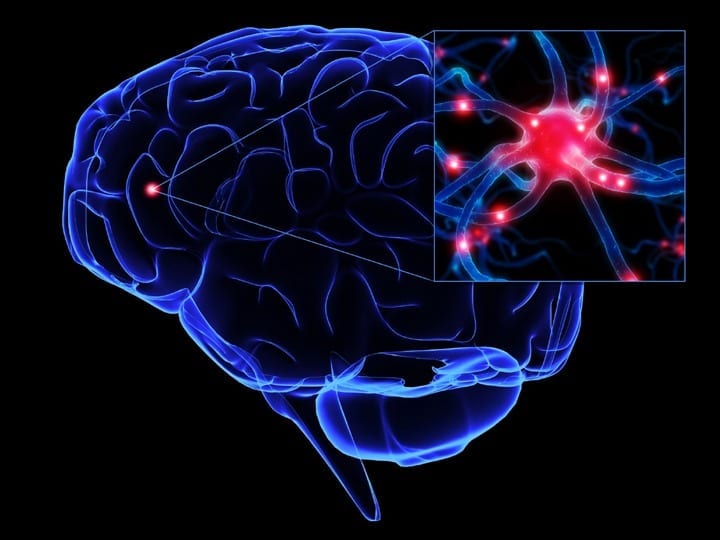
New bio-sensing technologies give us cheap, fast and convenient health data
Wearable E-skin that can measure heart rate and blood pressure, and paper diagnostic machines the size of a credit card that can give instant readings on blood and saliva samples are two new bio-sensing technologies presented at Elsevier’s 4th International Conference on Bio-Sensing Technology in Lisbon, Portugal on 12 May 2015.
Bio-sensors can detect and analyze data to give patients information on their heart rate and blood pressure, blood sugar and hormone levels, and even test whether they are infected with antibiotic-resistant bacteria. This detection technology is a step forward in personal medicine, giving patients real-time information about how their bodies are functioning and suggesting the most suitable treatments.
Professor Anthony Turner, Head of the Biosensors & Bioelectronics Centre at Linköping University, Sweden, has developed an instrument the size of a credit card that can analyse blood and saliva samples. It is simple to use: you switch it on by pressing a button, then apply your sample to a circle in the bottom right corner and wait for a digital reading to be displayed and even sent to your mobile phone.
The whole instrument is printed on the card using a screen-printing technique. It could be used to monitor diabetes, kidney disease and heart disease, or to detect cancer. This, says Professor Turner, could turn a 2500-year-old paradigm on its head and put the power in the patient’s hands.
“We’re on the cusp of an entirely new era – not just for bio-sensing, but for measurements in healthcare and diagnostics generally,” said Professor Turner. “Until now, we have been used to going to a doctor, who endows us with some wisdom and retains information about us, and then waiting to see if we get better. Modern sensors and telecommunications are rebalancing this power; in the future, patients could have the information, while physicians provide a service.”
The printed instruments are the result of a collaboration between Linköping University and Swedish ICT non-profit Acreo, and the team is now looking for corporate partners to work with to mass-produce them. At just €5 each – a cost that’s expected to fall to €0.50 – the paper diagnostic instruments offer an inexpensive way to analyse samples.
“When I started doing electrochemistry 30 years ago, an instrument like this would have been the size of a filing cabinet, and would have cost me €10,000,” said Professor Turner. “We’ve now got the technology figured out – we had to combine the area of printed electronics and printed biosensors; it’s the first time anyone has printed an entire instrument.”
This means they have the potential to provide patients and doctors in developing countries with accessible, affordable medical tests. For example, the printed card could be made part of the packaging of antibiotics, helping determine which antibiotic would be best to treat a patient’s infection.
Such printable devices could also be worn like plasters or contact lenses, transmitting information to mobile phones. Similarly, e-skin devices are also designed to be wearable and portable, and to transmit data about how a patient’s body is functioning.
Professor Ting Zhang, from Suzhou Institute of Nano-Tech and Nano-Bionics, Chinese Academy of Sciences, China, is presenting a new kind of e-skin at the Conference. E-skin is developed based on flexible electronic technology and nanotechnology; because of its unique ability to detect tiny changes in pressure, e-skin can be used to monitor blood pressure, heart rate and wrist pulse.
Professor Zhang and his team have developed two key aspects of the technology – making the sensor element more sensitive and making the material more flexible – bringing wearable diagnostic systems a step closer. They have used carbon nanotubes and sheets of graphene only a few atoms thick to construct ultra-sensitive, transparent and flexible e-skin.
“We’re very excited to present our new technology,” said Professor Zhang. “We’ve shown that the e-skin can be used to monitor many different human physiological signals. We believe our new material can give real-time diagnosis of diseases and provide an instant health assessment while a patient is wearing it.”
Read more: E-skin and pocket-sized diagnostic machines give patients the power back
The Latest on: Bio-sensing technologies
[google_news title=”” keyword=”Bio-sensing technologies” num_posts=”10″ blurb_length=”0″ show_thumb=”left”]
via Google News
The Latest on: Bio-sensing technologies
- Comstock Announces First Quarter 2024 Results and Corporate Updateson April 30, 2024 at 3:51 am
VIRGINIA CITY, Nev., April 30, 2024 (GLOBE NEWSWIRE) -- Comstock Inc. (NYSE: LODE) (“Comstock,” “our,” and the “Company”), today announced its first quarter 2024 results, business updates and an ...
- Comstock’s Physics-Based AI Investment Emerges From Stealthon April 29, 2024 at 3:47 am
Comstock Social Media Policy Comstock Inc. has used, and intends to continue using, its investor relations link and main website at www.comstock.inc in addition to its Twitter, LinkedIn and YouTube ...
- Epicore Biosystems Releases Connected Hydration Wearableon April 25, 2024 at 10:12 pm
Epicore Biosystems has announced the commercial launch of Connected Hydration. Connected Hydration is a sweat-sensing wearable patch and mobile app that equips workers with customized, real-time ...
- S. Korea to seek global leadership in AI chip, advanced bio, quantum technologies: gov'ton April 25, 2024 at 2:20 am
South Korea will launch an initiative to become one of three leading nations in the so-called game-changer industries that include artificial intelligence (AI) chip, advanced biology and quantum ...
- The most powerful phonon laser ever madeon March 17, 2024 at 6:46 am
Speaking to New Scientist, Richard Norte at the Delft University of Technology in the ... ultra-sound sensing, atmospherical monitoring, and even bio-medical diagnosis of levitated micro-size ...
- Aquatic Organic Matter Fluorescenceon November 12, 2023 at 10:24 am
Darren M. Reynolds, University of the West of England, Bristol Darren Reynolds leads a research group within the Centre for Research in Biosciences and sits on the Scientific Advisory Board for the ...
- Journal Informationon September 19, 2023 at 8:12 pm
We aim to provide an impactful platform for researchers to showcase innovative work focused on developing biosensing hardware and software technologies, devising novel protocols and methods that ...
- Aims & Scopeon September 19, 2023 at 8:12 pm
We aim to provide an impactful platform for researchers to showcase innovative work focused on developing biosensing hardware and software technologies, devising novel protocols and methods that ...
- Steve Flemingon August 19, 2023 at 9:24 pm
With a teaching background in physical geography, remote sensing, photogrammetry ... and other geographic information science and technology courses. He will continue to teach courses in these areas ...
- UAV bio-inspired sensingon July 26, 2023 at 1:02 am
We are using inspiration from these biological flyers to develop technologies to improve UAV flight performance ... bats and insects for air-flow sensing, as well as the water-flow sensing systems of ...
via Bing News










